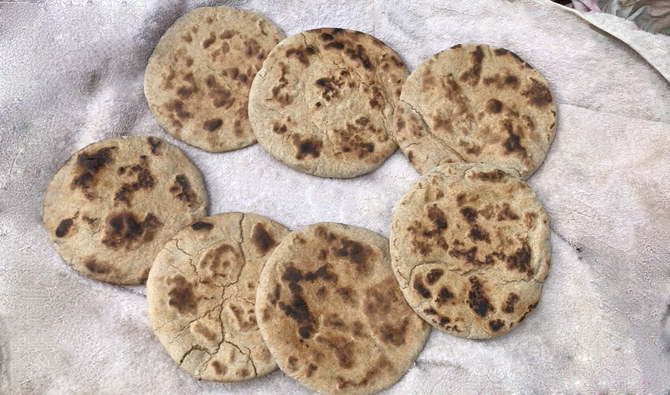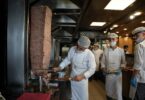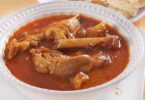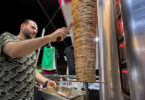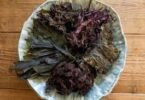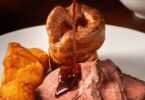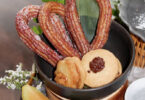Nisar Ali
KHAPLU: After offering afternoon prayers, Fatima carries wood and dried cow dung from the roof of her house in northern Pakistan to her kitchen and lights a fire under a large, black stove as she prepares to make a local bread called Khurba that is a Ramadan staple in the region.
In Khaplu Valley in Pakistan’s Gilgit-Baltistan (GB) region where Fatima, 66, lives, no pre-fast suhoor meal is complete without Khurba — known for keeping one full for long hours through the day — and a local version of salty tea called Payoo Chaye.
“The importance of Khurba is that if anyone eats Khurba during suhoor, he can’t feel hungry for long a time because this is not easily digestible,” Ghulam Hassan Hassanu, a local historian and writer, told Arab News, adding that one could even do “hard” labor while fasting if he or she had consumed Khurba.
To make Khurba, flour is first sifted into a pot and then baking soda, salt and water added. The dough is kneaded into round balls and rested on a heated griddle so that it loses its moisture.
It is then cooked over a fire.
“We always eat Khurba but this is a very special dish for us during Ramadan,” Fatima told Arab News at her home. “Once it is ready, we crumble the Khurba [into pieces] and then we mix butter or apricot oil into the pot, and we eat the mixture during sehri,” she said, adding that the dish was “very healthy.”
Mazahir Hussain, a Khaplu-based hotelier, said the bread was widely consumed during Ramadan and mostly prepared at home and unavailable in markets.
“Khurba is made in homes, not in hotels,” he said. “Women make this food in their homes in the traditional way.”
Hassanu the historian said while the best quality Khurba was made in Khaplu Valley, the famous bread was also prepared in Kharmang, Shigar, Skardu and Rondu districts of the Gilgit-Baltistan region.
“In addition, it is also made in the Kargil and Ladakh valleys [of India],” he said. “And Khurba is made in every place where the Balti people reside,” he added, referring to a local term for the ethnic Balti people in from Gilgit-Baltistan.
Among the five popular types of bread, Hassanu said the first was Rgia-Rat, followed by Thal-Khur, Biami-Khurba, Rxab-Khur and Mar-Khur.
During the holy month, the Rgia-Rat, Thal-Khur and Biami-Khurba were considered an important staple diet, the historian explained.
“Rgia-Rat Khurba is eaten on the same day while Biami-Khurba can be kept and eaten for 15 days as it is cooked in the oil-mixed heated sand,” he said.
“Due to the lack of moisture, it [Biami-Khurba] can be eaten for 15 to 16 days.”
Courtesy: arabnews

